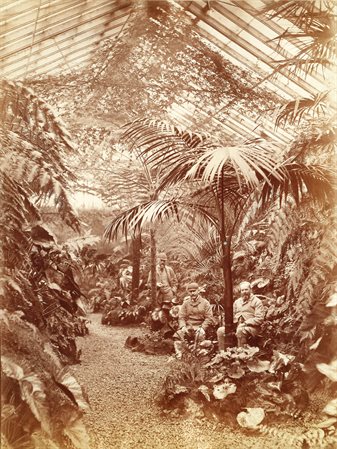Glass Houses
Glasshouses were built at Tatton from around the mid 1700s. They were used for growing pineapples along with many other fruit including figs, apricots, grapes, peaches and nectarines.

The Pinery Vinery
The Pinery Vinery was reinstated in 2007. This restored glasshouse is possibly the only genuine, rebuilt example of a Pinery Vinery in existence in Britain. It was originally designed by Samuel Wyatt in 1774, during the heyday of the pineapple as a status symbol, when individual fruits were sold for the equivalent of £5,000 today.
This special building is 120 feet long and divided into three sections, in order to nurture differently aged plants correctly, as pineapples only fruit every third year. The structure of the Pinery Vinery, as with the original 250-year-old design, includes small arches built into the brickwork at floor level, which are part of the underfloor heating system.
Glasshouses not only produced fruit for the table but also pot plants and cut flowers for the main house. The addition of orchid and general pot plant growing glasshouses made this possible.

The Fernery
The Fernery was designed and built in the late 1850s by Joseph Paxton; better known for designing The Crystal Palace, Great Exhibition in 1851. This historic Fernery is one of the largest surviving glazed ferneries in the country.
Ferns and Tree Ferns
The Fernery houses an extensive collection of ferns and tree ferns, some of which are the original plants collected in New Zealand and Australia by Captain Charles Randle Egerton in the 1850s. Towards the end of 19th century, the roof of the building was raised to its present height to accomodate the plant growth. Species to look out for are Tree Ferns (Dicksonia), ground cover ferns (Woodwardia randicans), and the Creeping Fig (Ficus pumila).
This old photograph to the right shows Lord Egerton and his friends in the Fernery, pre 1891.
Today the Fernery remains a beautiful green space and peaceful retreat, especially if the weather is less than perfect! It's always dry, warm and welcoming, even in the winter months. Here's a short video of The Fernery sharing the beauty of this wonderful structure and plants.
Showhouse
Linking the Conservatory to the Fernery, the Showhouse was used to exhibit groups of colourful flowering plants such as Geraniums, Fuschias, Hydrangeas and Orchids. These were changed regularly throughout the season, except for in Winter when the Showhouse was reverted to a growing house instead where young stock and pot plants were cultivated for use in the Mansion.
The Conservatory
The Conservatory was built in 1818 and designed by Lewis Wyatt for Wilbraham Egerton as an addition to the Mansion. When first built, it was linked directly to the Mansion by a long glass corridor, but this was removed in around 1935 to make way for an extension to the Tenants' Hall.
For some time, the Conservatory was devoted to growing oranges which inevitably gave it the secondary moniker of 'The Orangery'. Alterations were even made to properly cater for the plants at the turn of the century but in the early 1990s, the decision was taken to restore the Conservatory back to its original plan. This work was completed in 1994 and won a Europa Nostra Award for its restoration.
With the Conservatory returned to its former purpose, it was only fitting to house the plants that were introduced before and up to 1820, which accounts for the fact that many originated in Australia and New Zealand, reflecting the plant collector's expeditions during that time.
